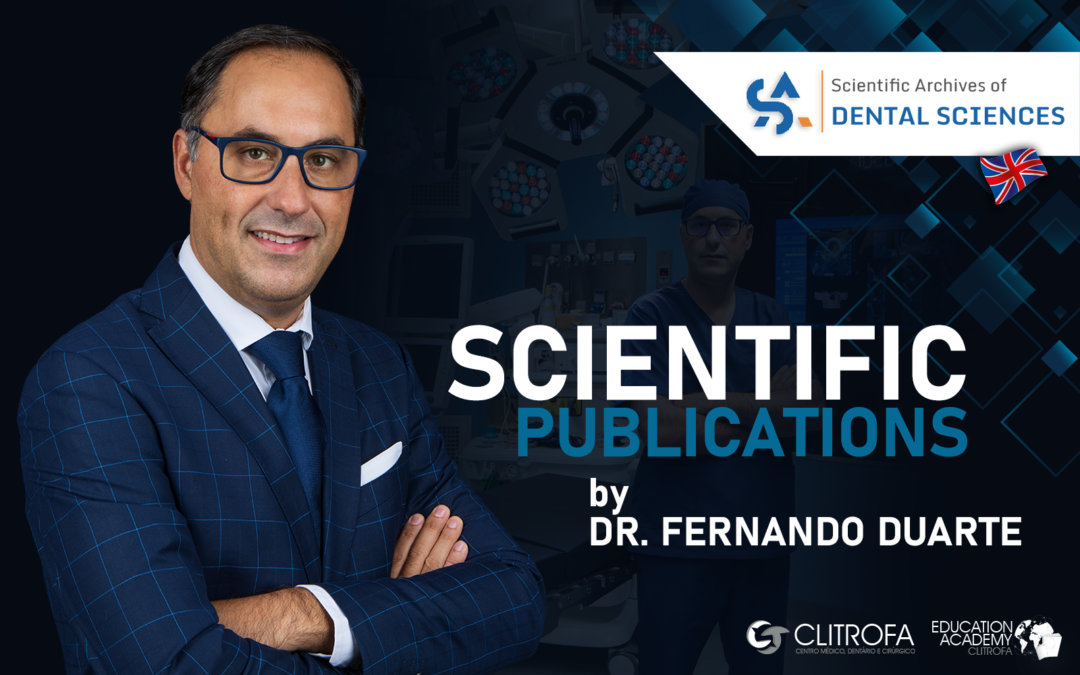Categoria: Cirurgia Ortognática
Autores: Fernando Duarte, João Neves Silva, Colin Hopper, Nigel Hunt.
Referência: Masseter Muscle Adaptation Following Orthognathic Surgery – MRI Analysis
Scientific Archives Of Dental Sciences | Volume 3 Issue 7 July 2020
ISSN: 2642-1623
Abstract: Orthodontic and surgical technical advances in recent years have resulted in treatment opportunities for a whole range of craniofacial
skeletal disorders either in the adolescent or adult patient. In the growing child these can include myofunctional orthodontic
appliance therapy or distraction osteogenesis procedures, whilst in the adult the mainstay approach revolves around orthognathic
surgery.
The literature agrees that for a change in craniofacial morphology to remain stable, the muscles acting upon the facial skeleton
must be capable of adaptation in their structure and, therefore, their function. Failure of the muscles to adapt to the change in their
length or orientation will place undesirable forces on the muscle attachments leading to potential instability of the skeleton. Adaptation
can occur through various processes including those within the neuromuscular feedback mechanism, through changes within
muscle structure or through altered muscle physiology, and through changes at the muscle/bone interface.
This prospective, case controlled clinical study was designed to provide information in relation to masticatory muscle adaptation
following orthognathic surgery. Both for ease of access, and in order to provide data suitable for comparison with previous studies of
muscle function, the muscle chosen for investigation was the masseter muscle.
It is now accepted that because there is no single method of assessing masticatory function, several measures should be taken,
and whenever possible, simultaneously.
Evaluation of occlusal force changes in orthognathic surgery using force-sensing sensors in 3 years of follow-up
The aim of this study was to test a prototype device called occlusal force diagnostic system in relation to occlusal force adaptation following orthognathic surgery.
Anatomic and functional masseter muscle adaptation following orthognathic surgery—MRI analysis in 3 years of follow-up
Orthodontic and surgical technical advances in recent years have resulted in treatment opportunities for a whole range of craniofacial skeletal …
Evaluation of Pressure Changes in Orthognathic Surgery using Pressurex® in 3 Years of Follow-up
Despite its importance, the measurement of pressure in orthognathic surgery often receives little attention. Pressurex® (SPL – Sensor Products LLC, USA) is one of a few pressureindicating sensor films that reveals pressure distribution and magnitude between any two contacting, mating or impacting surfaces, and is currently viewed as a golden standard for that purpose. This study was designed to test Pressurex® in orthognathic surgery.
Occlusal Force Diagnostic System – A Device for Clinical Application in Orthognathic Surgery
This research project was designed to apply several, newly developed and more sophisticated methods of measuring muscle structure and function to a situation where adaptation of muscle is pivotal to the success of a therapeutic approach, as is the case with orthognathic surgery.
Bio-Modelling Reconstruction Based on MRI Image Acquisition and there Application in Orthognathic Surgery
Categoria: Cirurgia Ortognática Autores: Duarte F., Silva JN., Ramos C. and Hopper C. Referência: Bio-Modelling Reconstruction Based on MRI Image Acquisition and there Application in Orthognathic SurgeryJournal of Clinical and Medical Images | 2023; V7(10):...
Measurement of Occlusal Force in Orthognathic Surgery using Force Sensing Sensors
This study was designed to apply alternative and innovative methods of measuring muscle area, volume, structure …
Correlation between MRI and Biomodelling Analysis in Masseter Muscle Following Orthognathic Surgery
This pilot investigation was designed to apply several and innovative methods of measuring muscle area, volume, structure, function and …
Measurement of Pressure in Orthognathic Surgery using Pressurex®
Despite its importance, the measurement of pressure in orthognathic surgery often receives little attention.
The importance of occlusal force measurement in orthognathic surgery – A pilot study
This pilot investigation was designed to apply several, newly developed and more sophisticated methods of measuring muscle structure and …
Masseter Muscle Adaptation Following Orthognathic Surgery – Biomodelling Analysis – A pilot study
Purpose: This pilot investigation was designed to apply several, newly developed and more sophisticated methods of measuring muscle …

